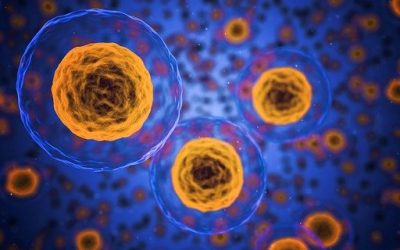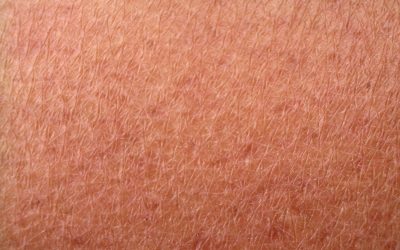Skin and Hair Health
Skin and Hair Health
Great Promise for Stem Cell Vesicles in Life Extension
Over a decade ago, stem cells were promised to repair virtually everything in our bodies, but over time researchers noticed that very few stem cells actually survive transplanting over the long term, and began looking at what stem cells (SCs) were doing to cause the...
Help Protect Your Skin From Aging With Astaxanthin
By komal kumar In this post we'll look at how you can protect your skin from ageing, including the role Astaxanthin can play by reducing the impact of free radicals and helping to reverse damage that has already occurred A recent article in the Daily Mail estimated...
Telomeres – Our Biological Aging Clock – New and Exciting Possibilities
The science of cellular aging has advanced in the last several years at a steady pace since the telomere, the repeating DNA sequence at the end of our chromosomes, was found to be the mechanism that keeps track of our cellular age and determines the number of...
Skin and Hair Health – So much more than beauty
Our skin is the largest organ of the human body, weighing approximately 10 pounds and covering an area of about 16 square feet. We generally take skin for granted and tend not to take very good care of it. Our skin is responsible for protecting our internal organs from the toxic external world. Our skin protects us from heat, cold, and physical injuries. It also provides us with sensory information about the nature of the external world and is our first defense against invasion by bacteria, viruses, and other toxic elements. The skin is also an excretory organ, removing toxins from the body via perspiration. But, alas, skin changes as we age, from the soft, elastic, flawless hide of a newborn to the tissue-thin, spotted, wrinkled, dry wrap we own in our 90s.
There are many causes for the accumulated cellular damage in the skin that we call aging. Among these are the oxidative processes and related free radical damage that result from UV sunlight, smog, toxins, cigarette smoke, X-rays, drugs, and other stressors. Young skin is also exposed to these potentially damaging changes, but when we are young, there is sufficient cellular energy (ATP) for DNA repair and cell renewal. Enzymes that provide antioxidant activity such as SOD and catalase are readily available. As we age, there is increased wear and tear, while at the same time the energy for cell repair and renewal is diminished and the antioxidant enzymes are less available. Another mechanism for skin aging and damage is glycation. Many of the changes observed in type II diabetic patients can be traced to the increased production of advanced glycation end products, also known as AGEs. AGEs are produced as a result of a non-enzymatic reaction with glucose interacting with proteins, lipids, and nucleic acids (DNA). AGEs are also present in normal skin, increasing with advancing age and contribute to increase of senescent cells in many body organs, including the skin. Beyond that, our immune system considers AGEs as foreign invaders to be destroyed. As a result, much of the skin damage with age is the result of our own immune cells attacking our skin from within.
Health-conscious Americans are concerned about the damage that sunlight inflicts on the skin. Protecting against the effects of ultraviolet radiation is a multi-million dollar industry. Creams, lotions, cosmetic products, and protectants are to be found everywhere, resulting in confusion for the consumer regarding what products are really helpful. Cosmetic companies may seize upon an idea, put that ingredient into a cream or lotion without much research, and then advertise it to an unsuspecting public. One area of understanding unfolding in the last few years of research is that adequate exposure to the sun’s rays is critical for long-term health. The sun may damage the skin, but it also provides us with large doses of vitamin D3, and research is now confirming that our immune system is empowered by vitamin D3 and drastically crippled by a deficiency of it.
Skin coloration is an adaptation to historical solar exposure. The closer to the equator the evolutionary home of a people, the darker the skin. If you are a fair-skinned person, you need to get about five to 10 minutes of sunlight a day on your arms and face, depending on where you live in relation to the equator. If you live in a northern climate, you need to increase that time – double it or more. If you live closer to the equator (the southern United States, for example), five to 10 minutes a day is sufficient. A dark-skinned African needs more than 20 times the sun exposure as a northern European to manufacture adequate vitamin D3. A person of African descent in Chicago, in the winter, could lay in the sun in a bathing suit all day long and still be deficient by the end of winter.
What are the best ways to keep your skin health at its peak? Use effective means for nurturing it from the inside, protecting it from the outside, and tame our immune response to AGEs and oxidation-damaged skin components. Skin health is tied to overall health, so if you eat a wide variety of real foods, sleep adequately, exercise appropriately, use supplements that make up for the changes in functions that accompany aging, and keep open to learning the advances in aging science, your skin will reflect the care you take for general health. Let’s look at some specific strategies:
Smoking; DON’T – PERIOD! Nothing can protect you adequately against the damage this activity causes; never start, just quit; sooner is better than later.
Sun exposure We are designed to live in the sun. Now we understand that the sun makes vitamin D in our skin and that this hormone directs the function of nearly every cell in the body. Many thing go wrong when levels get low, most obviously our immune function. On the other hand, excess sun exposure ages our skin rapidly, very obviously causing wrinkles, sags, thinness and aberrant growth issues like melanoma and keratosis. I personally don’t like sunscreens, because the ingredients are not selected with regard to overall toxicity and are absorbed directly into our tissues. That may change, but right now the product spectrum largely ignores their impact on total health. The key is proper exposure for our evolutionary and geological origins. If we are very white, then we need very little sun if living in Florida or the south western states. We need sun doses corresponding to upper Norway, where our ancestors may have originated. On the other hand, if we are very dark, we will be seriously hampered living in Alaska, and need to take lots of vitamin D3 to make up for it. There is a mystery herein: what else does sunlight do for human health, like vitamin D, that we have yet to discover? Fear of the sun and use of sunscreen has, in my thinking, caused great harm to the last two generations in our western culture. So cover up accordingly and stay indoors accordingly, but make sure your vitamin D levels are optimal by supplementation and testing to validate those levels. I have found that with my 25-OH vitamin D test results at about 100ng/ml SB ng/dl I can stay in our mid-day Los Angeles sun for a couple of hours and not burn, whereas before I would burn in a half hour.
What can you do for serious burns or burn scaring? One product I have seen raved about in several of the leading alternative health news letters is Whole Skin Ointment by Chi’s Enterprises. This Amazon link gets you to the product, but I have found better product information on other website by searching on the name:
It has a reputation for very rapid healing of serious burns with no scaring or discoloration.
Nutrition In Work!


